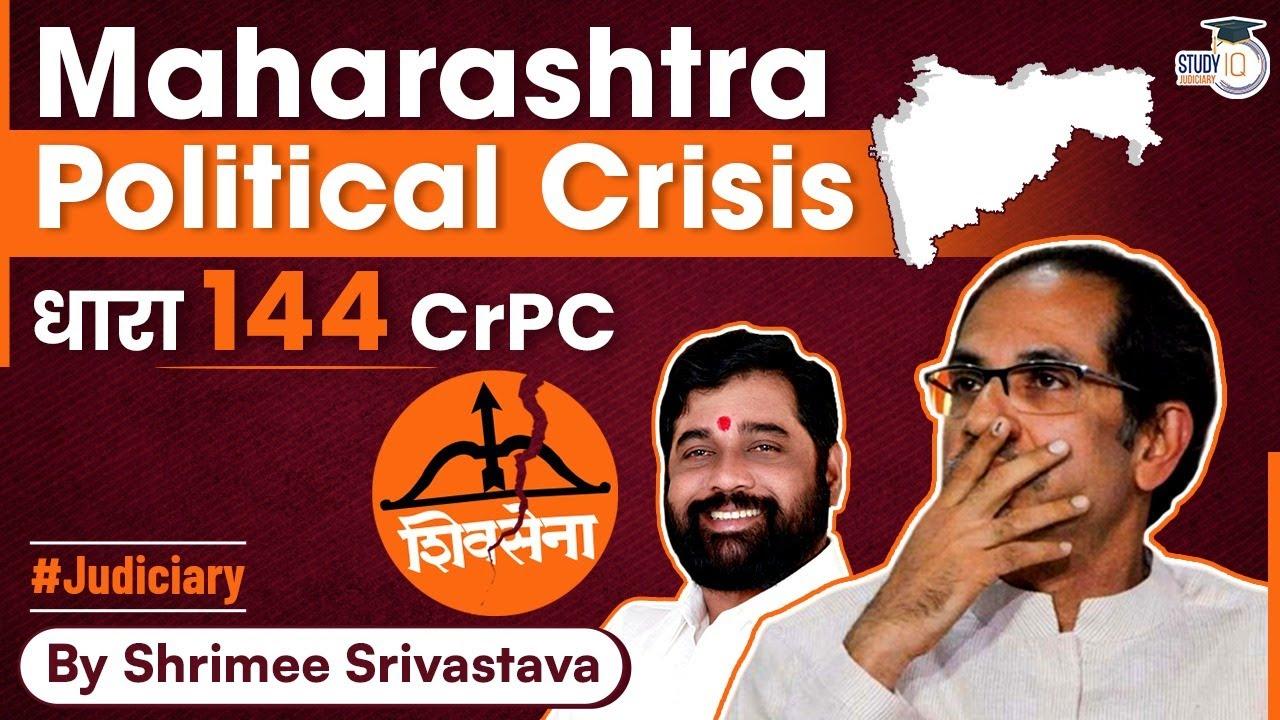Table of Contents
Maharashtra Political Crisis and Imposition of Section 144 of CrPC
Political Crisis
- India’s richest state, Maharashtra, is witnessing high political drama that has put the fate of its government in jeopardy.
- Around 35 lawmakers – led by an influential state minister, Eknath Shinde – are holed up in a hotel in Guwahati city.
- Mr Shinde – who has been part of the Shiv Sena for decades – claims that he is acting in the interests of his party.
- To avoid disqualification under India’s anti-defection law, Mr Shinde needs the support of 37 lawmakers in the state.
- Mr Shinde has claimed he is not breaking away from the Shiv Sena and that the lawmakers will carry forward the Hindu nationalist legacy of the party’s founder Balasaheb Thackeray – the chief minister’s late father.
Imposition of section 144 CrPC
- The Thane District Administration has already imposed Sec 144 CrPC in the district till July 10 in view of the political uncertainty.
- City police met with the top brass of state police officials and decided to secure the offices and houses of political parties and leaders.
- A few incidents of attack on the offices of rebel MLAs have taken place in parts of the state.
- The prohibitory orders issued as it bans the assembly of five or more persons at one place.
What is section 144 of CrPC?
- This law empowers the magistrate of any state or union territory in India to pass an order prohibiting the gathering of four or more people in a specified area.
- It is imposed in urgent cases of nuisance or apprehended danger.
- This order can be passed against a particular individual or general public
Features of Section 144:
-
- It places restrictions on handling or transporting any kind of weapon in the given jurisdiction.
- The maximum punishment for such an act is three years.
- According to the order under this section, there shall be no movement of public and all educational institutions shall also remain closed.
- Further, there will be a complete bar on holding any kind of public meeting or rallies during the period of operation of this order.
- It is deemed a punishable offence to obstruct law enforcement agencies from disbanding an unlawful assembly.
- It also empowers the authorities to block internet access in the region.
- Duration of Section 144 Order:
- No order under this section can remain in force for a period of more than 2 months.
- Under the state government’s discretion, it can choose to extend the validity for two more months with the maximum validity extendable to six months.
- Once the situation becomes normal, Section 144 levied can be withdrawn.
What is the Difference between Section 144 and Curfew?
- Section 144 prohibits the gathering of four or more people in the concerned area, while during curfew people are instructed to stay indoors for a particular period.
- Markets, schools, colleges and offices remain closed under the curfew and only essential services are allowed to run on prior notice.
Way forward:
- Section 144 is a useful tool to help deal with emergencies.
- The proceeding under this section, the Magistrate should hold an enquiry and record the urgency of the matter.
- There is a need to balance the granting of plenary powers.
Download | Free PDF






















 WhatsApp
WhatsApp